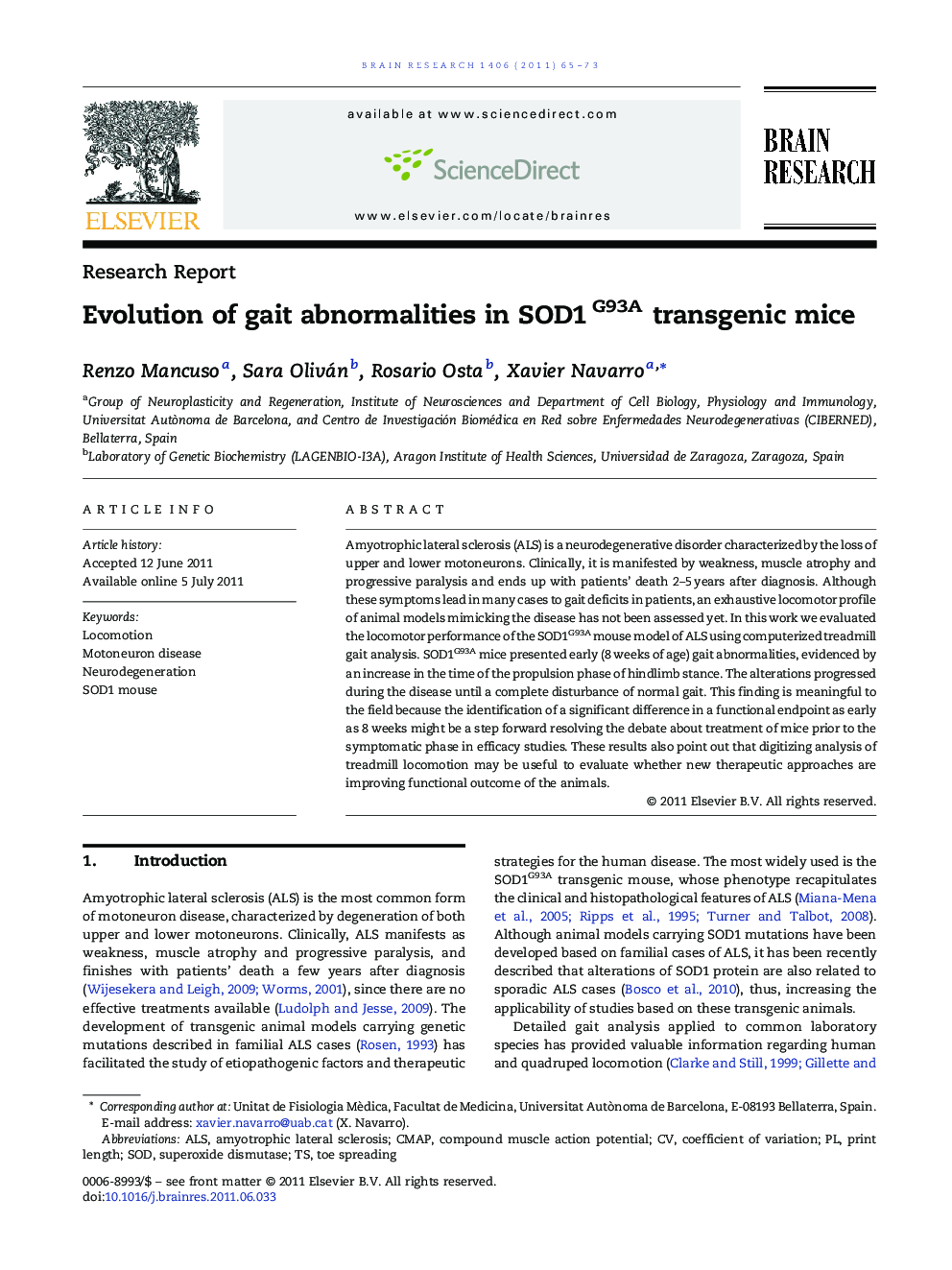| Article ID | Journal | Published Year | Pages | File Type |
|---|---|---|---|---|
| 4325770 | Brain Research | 2011 | 9 Pages |
Amyotrophic lateral sclerosis (ALS) is a neurodegenerative disorder characterized by the loss of upper and lower motoneurons. Clinically, it is manifested by weakness, muscle atrophy and progressive paralysis and ends up with patients' death 2–5 years after diagnosis. Although these symptoms lead in many cases to gait deficits in patients, an exhaustive locomotor profile of animal models mimicking the disease has not been assessed yet. In this work we evaluated the locomotor performance of the SOD1G93A mouse model of ALS using computerized treadmill gait analysis. SOD1G93A mice presented early (8 weeks of age) gait abnormalities, evidenced by an increase in the time of the propulsion phase of hindlimb stance. The alterations progressed during the disease until a complete disturbance of normal gait. This finding is meaningful to the field because the identification of a significant difference in a functional endpoint as early as 8 weeks might be a step forward resolving the debate about treatment of mice prior to the symptomatic phase in efficacy studies. These results also point out that digitizing analysis of treadmill locomotion may be useful to evaluate whether new therapeutic approaches are improving functional outcome of the animals.
► SOD1 mice suffer early locomotor abnormalities starting at 8 weeks of age. ► Locomotor impairments progress during the disease until complete disturbance of normal gait. ► Digigait analysis is useful as a tool to assess the effect of new treatments.
